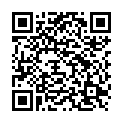|
|
|
| Module code: KIM-WEB |
|
|
2V+2U (4 hours per week) |
|
6 |
| Semester: 3 |
| Mandatory course: no |
Language of instruction:
German |
Assessment:
[still undocumented]
|
KIM-WEB (P221-0209) Computer Science and Communication Systems, Master, ASPO 01.10.2017
, semester 3, optional course
PIM-WEB (P221-0209) Applied Informatics, Master, ASPO 01.10.2017
, semester 3, optional course
PIM-WEB (P221-0209) Applied Informatics, Master, SO 01.10.2026
, semester 3, optional course
|
60 class hours (= 45 clock hours) over a 15-week period.
The total student study time is 180 hours (equivalent to 6 ECTS credits).
There are therefore 135 hours available for class preparation and follow-up work and exam preparation.
|
Recommended prerequisites (modules):
None.
|
Recommended as prerequisite for:
|
Module coordinator:
Prof. Dr. Maximilian Altmeyer |
Lecturer: Prof. Dr. Maximilian Altmeyer
[updated 31.07.2017]
|
Learning outcomes:
Students will be given an overview of the current status of the most important tools and technologies for developing web applications. They will be able to analyze a given task and decide which technologies are most suitable for solving it. In addition, they will be able to create the respective web application together with their team.
[updated 20.12.2017]
|
Module content:
Basics (HTML5, CSS3, JavaScript)
EcmaScript6
Functional programming with JavaScript
Use of Node.js
GUI frameworks (e.g. Angular, Polymer, React)
Full stack frameworks (e.g. Meteor)
[updated 20.12.2017]
|
Teaching methods/Media:
Presentation with examples
Exercises
Project
[updated 24.02.2018]
|
Recommended or required reading:
Rauschmayer, Axel: Speaking JavaScript, http://speakingjs.com/es5/
Rauschmayer, Axel: Exploring ES6, http://exploringjs.com/
Springer, Sebastian: Node.js: Das umfassende Handbuch. Serverseitige Webapplikationen mit JavaScript entwickeln,Rheinwerk Computing; Auflage: 2 (30. Mai 2016)
W3C: HTML5, http://www.w3.org/TR/html5/
[updated 24.02.2018]
|


